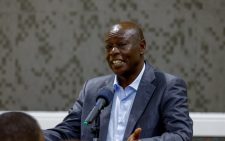Kenya must break free from aid dependency

For decades, Kenya has remained shackled to the cycle of donor dependency, with Western aid dictating the pace and nature of development. Kenya, like many African nations, has been a beneficiary of this aid, but at a steep cost. The conditionalities attached to Western assistance have often constrained policy autonomy and stifled the kind of bold economic restructuring necessary for true growth and resilience.
Kenya now needs to focus on the East. The country’s experience with Chinese investment and collaboration provides a compelling case study of how a development model driven by strategic infrastructure and economic partnerships can yield tangible results. Unlike Western aid, which often comes tied with political strings and restrictive policy reforms, China’s model is built on the principle of non-interference in domestic affairs and respect for national sovereignty. This pragmatic approach has allowed Kenya to identify its own development priorities and implement them with financial and technical backing from China.
Take, for instance, the Standard Gauge Railway (SGR), Kenya’s largest infrastructure project since independence. Financed and built by Chinese partners, the SGR has significantly reduced the cost and time of transporting goods from Mombasa to Nairobi, enhancing trade efficiency and boosting the broader East African logistics network. The long-term strategic value of the SGR in unlocking economic potential and integrating regional trade routes cannot be gainsaid. This is a development strategy that prioritises economic transformation rather than immediate returns.
Moreover, China’s focus on industrialisation and manufacturing aligns well with Kenya’s Vision 2030 goals of becoming a middle-income country through increased industrial output and job creation. By creating manufacturing hubs and improving infrastructure, Kenya is laying the groundwork for a more diversified economy, reducing reliance on raw material exports and positioning itself as a competitive player in the global market.
Critically, China’s development model emphasises capacity building and skills transfer, a vital ingredient for sustainable growth. Chinese firms engaged in Kenyan infrastructure projects have not only provided jobs but have also facilitated knowledge exchange, equipping Kenyan engineers, technicians and project managers with the expertise to manage future projects independently. This stands in stark contrast to the Western aid model, which has often created dependency rather than empowerment.
The digital economy is another sector where Kenya has benefited from China’s development blueprint. Huawei’s involvement in Kenya’s telecommunications infrastructure, including the rollout of 5G technology, has positioned the country as a leader in digital connectivity in Africa. Enhanced digital infrastructure has not only improved access to information and communication but also fuelled the growth of Kenya’s thriving fintech sector, led by innovations such as M-Pesa.
China’s rise from a low-income country to the world’s second-largest economy was not the result of short-term interventions or donor-funded projects. It was built on decades of state-led investment in infrastructure, manufacturing and human capital. Kenya’s adoption of a similar long-term development vision, supported by Chinese partnerships, positions it to emulate this success.
This is not to say that Kenya should abandon all Western partnerships. Rather, China’s approach presents an opportunity to diversify and balance its external relationships. The absence of political conditionalities in Chinese aid and investment agreements allows Kenya to maintain policy independence and chart its own development course. It shifts the focus from aid dependency to economic self-sufficiency, a goal that has long eluded many African states under the Western aid model.
Indeed, China’s development model, anchored in infrastructure, industrialisation and capacity building, offers a pragmatic and sustainable pathway for Kenya’s economic future. By turning away from the cycle of donor dependency and embracing strategic partnerships with China, Kenya stands to unlock its full economic potential.
— The writer is a PhD student in International Relations














